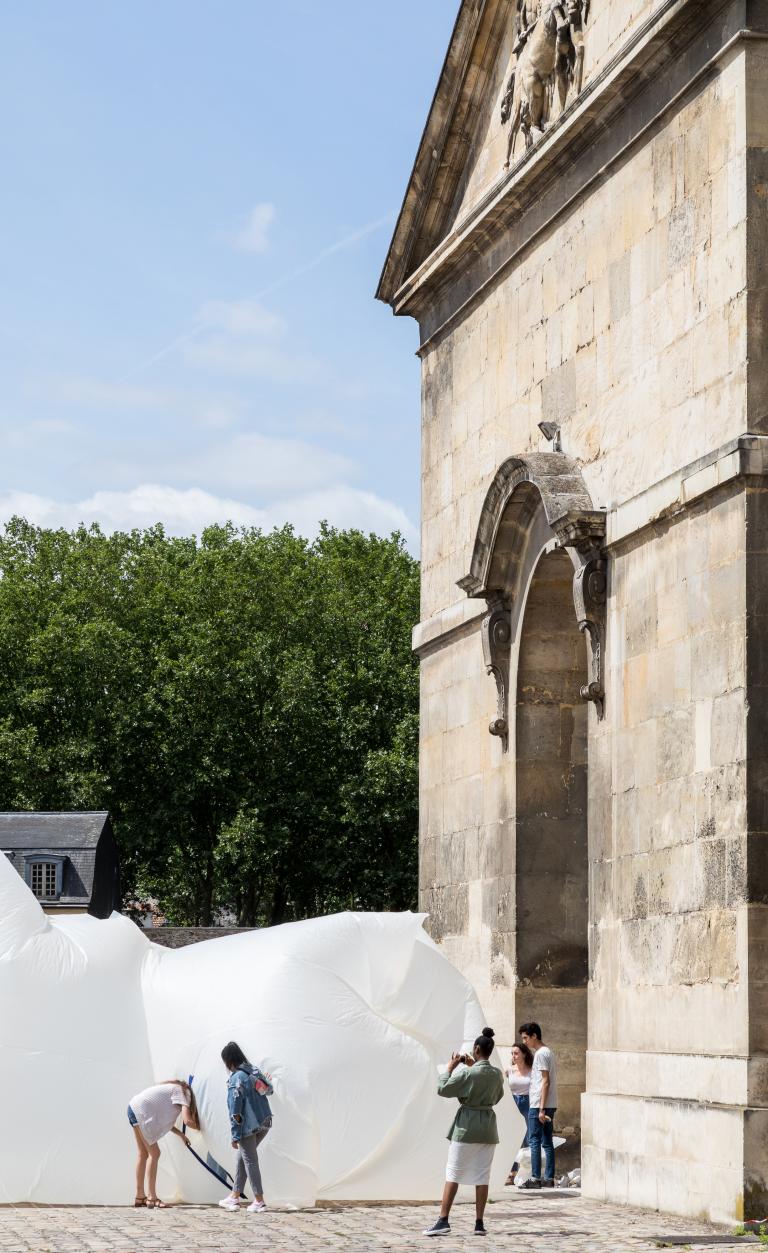Come and study at the the very heart of the château de Versailles
ÉNSA Versailles the unique school of architecture in The Petite Ecurie du Roy

The Royal Stables at Versailles were built between 1679 and 1682 by Jules Hardouin-Mansart. The grande Écurie housed saddle horses and a dressage school, while the petite Écurie housed draught horses.
The equestrian activity continued throughout the 20th century, with the buildings being used by the Ministry of War until 1960.
By this time, the buildings were in an advanced state of ruin, and a major restoration campaign was undertaken under the leadership of Pierre Lablaude, Chief Architect of Bâtiments Civils et Palais Nationaux, including the fitting-out of the ÉNSA Versailles premises.
A dependency of the château, the architecture of the Écuries is worthy of the wealthy residences, and respects the harmony that reigned at Versailles at the time: stone, brick tables and slate-covered mansard roofs, sculpted pediments.
Together with the Grande Écurie, it forms the crow's foot between the three avenues, closing off the Place d'Armes. Two wings frame the main courtyard, which ends in a hemicycle at the center of which the riding arena marks the axis of symmetry. Four single-row stable galleries are built on either side; two parallel to the avenues to the north and south, and the other two perpendicular to the plot to the east.
La petite Écurie du Roy, classified as a Monument Historique since 1862, has been endowed to the Etablissement public du musée du domaine national de Versailles and comprises four tenants: the EPV, the Centre de Recherche et de Restauration des Musées de France (C2RMF) - in the Aile de Sceaux, and partially in the Aile de Paris, the École nationale supérieure d'architecture de Versailles (ÉNSA Versailles) and the Musée du Louvre on the first floor of the three wings radiating around the central rotunda.
The ÉNSA Versailles occupies most of the buildings in the Petite Écurie, with the exception of the Sceaux and Paris wings on either side of the main courtyard.
The Ecole nationale supérieure d’architecture de Versailles was founded in 1969, just after May 68 in the empty Royal stables of the very Château de Versailles.
In 2023, the École nationale supérieure d'architecture de Versailles occupies a unique position on the edge of the Paris region and its academic landscape. Not quite parisian, not quite provincial, close to the urban periphery and on the border between urbanization and the rural world, ÉNSA Versailles places project culture at the heart of its teaching, as a model to be explored, shared and developed.
From this unique position, ÉNSA Versailles explores the major issues facing the next generation of architects it intends to train: the ecological transition of inhabited environments, the digital revolution and the relationship between living beings and architecture.
Founded in 1969 as a training and research establishment in the Petite Écurie du Roy of the Château de Versailles national estate, the school welcomes 1,200 students and doctoral candidates in three interconnected courtyards that play a key role in the school's project and innovative teaching methods.
ÉNSA Versailles is a public administrative institution under the joint authority of the Ministry of Culture and the Ministry of Higher Education, Research and Innovation. It belongs to the network of twenty French national schools of architecture.